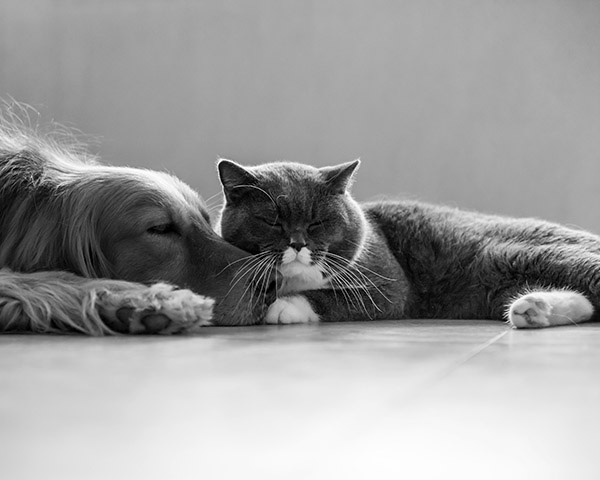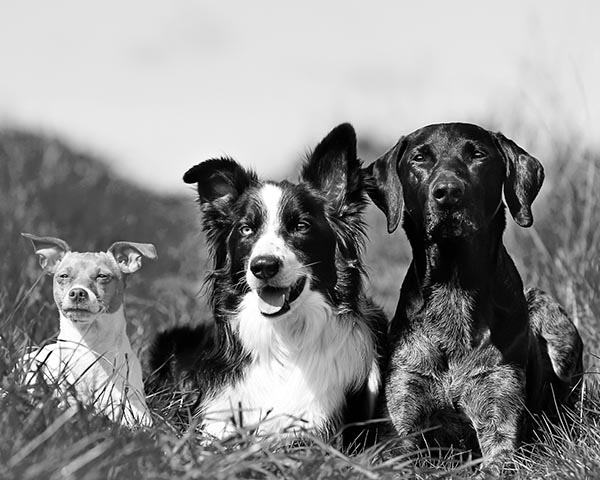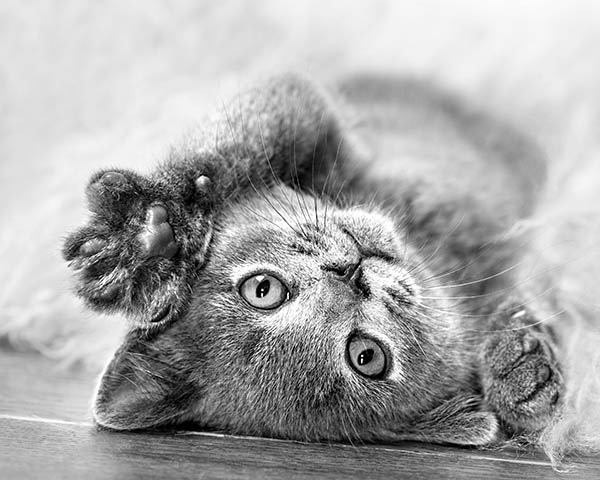Pug dog breed information and advice
Pugs can be a little divisive as a dog breed – there’s those who find them irrepressibly cute and then there’s those who don’t. Either way, you cannot deny these companion pups are an extremely popular breed of dog. But, because of this popularity, over-breeding has caused some serious Pug dog health issues.
If you’re looking to welcome a Pug into your home, make sure you’re buying one from a reputable breeder who is responsible and has the mum and pup’s welfare at heart.
When it comes to taking care of your Pug, our guide has information you need, including information about Pug temperament, exercise requirements and how much it can cost to buy a Pug puppy.
Pug facts

| Lifespan | 12 - 15 years |
| How much | £500 - £2000 |
| Size | 25 - 36 cm |
| Weight | 6.3 - 8.1 kg |
| Colours | black, apricot, fawn, silver fawn |
| Grooming | once a week |
| Temperament | stubborn, friendly, docile, independent |
| Exercise | 30 minutes daily |
Insurance for your Pug
As a brachycephalic breed of dog, sadly there are some common health issues that your Pug is likely to develop due to their shorter nose and flatter face.
These Pug health problems include:
Pet insurance for your Pug may help cover the costs of vet treatments and any unexpected illnesses or injuries.
As your Pug is prone to developing these conditions at some point in their life, it’s important to consider getting insurance sooner rather than later as most policies will not cover pre-existing illnesses. As with all insurances, policy limits, excesses and exclusions will apply.
Sainsbury’s Bank Pet Insurance
Sainsbury’s Bank Pet Insurance can protect your Pug puppy from as young as eight weeks old.
You may decide to take out one of the following Sainsbury’s Bank Pet Insurance policies for your pug:
- Lifetime Insurance – protect your pet for a lifetime with up to £10,000 towards vet costs, 24/7 vet assistance and cover at home and abroad.
- Maximum Benefit Insurance – claim vet fees during the policy's lifetime up to the policy limit of £3,000 or £6,000.
- Time-limited Insurance – cover up to 12 months from first treatment or up to the vet fee limit, whichever comes first.
How to care for a Pug
It’s not just cuddles that show your Pug puppy how much you care. Along with the best insurance for your pug, you need to make sure you’re on top of your dog’s diet, exercise, grooming and training.
Our Pug care guide will help you to keep your pup in tip-top shape.
Feeding and nutrition
Your breeder will tell you what food they have been feeding your Pug puppy. It’s best to continue with the same type of dog food once you get them home. A quick change in their diet can lead to an upset tummy so, when it comes to changing their food, you’ll need to do it slowly over time. Add a small amount of new food in with the old food, increasing the new and decreasing the old each day. Eventually, you will be left with a bowl of new food.
Beware – Pugs are greedy dogs. You will need to watch what they eat as they can easily become overweight. As Pugs have shortened noses, they are prone to breathing difficulties. So, the more weight they’re carrying, the harder they’ll find it to breathe.
To make sure your dog is eating the correct amount, weigh the food according to the guidelines given on the back of the food packaging. Split this daily amount into two separate meals for morning and evening. This will keep your dog’s hunger satisfied for longer. Also, keep the fatty treats and dinner leftovers to an absolute minimum.
Grooming
Pugs have short fur that needs brushing weekly, and they shed throughout the year. Brushing will help to remove the loose fur. The more you remove, the less there is to stick to your furniture and clothes.
Their coat will never need trimming, but it will need washing monthly. You'll also need to gently clean their facial folds with a damp cloth daily. They will not be able to clean these folds itself and this can cause Pug health problems if left.
Exercise
Pugs are lazy by nature and would happily sleep most of the day. But, as they’re prone to putting on weight, they need their daily exercise. Pugs need at least 30 minutes a day – if this is too much for them in one go, you can split it into two shorter walks. Playing games with your dog is a great form of exercise and gives them the mental and physical stimulation to help keep them fit, healthy and at a healthy weight.
Training
Training your Pug may be difficult. They’re a stubborn breed and will test your patience. But all dogs can learn with time and repetition.
Start by house training your dog. The breeder may have started your Pug puppy’s toilet training, which will make the process easier for you. Give your dog the chance to go to the toilet in the designated toilet area regularly. Give a command such as ‘go for a wee’ and praise your Pug when they go in the right place.
Further training will be easier when toilet training has been mastered. You can take your dog to training classes for tips and support. Pugs respond well to food rewards but be careful they don’t have too many as they tend to have a high fat content.
Temperament and behaviour
Pugs are an independent breed and are happy to entertain themselves, so give them plenty of toys to play with. They rarely show aggression to humans or other dogs and are quick to make doggy friends.
A Pug’s temperament is loving, and they show lots of affection towards their owners.
Pugs may be stubborn at times but they’re generally well behaved.
Common Pug health issues
You should take your Pug to the vet regularly and the right dog insurance could help cover the costs if you need it. There are some common problems found in Pugs that vets will need to keep an eye on.
Make sure to insure your Pug puppy as early as possible, as most insurance policies will not be able to cover your Pug for pre-existing conditions.
Luxating patella
Luxating patella is a condition where the kneecap does not slide into the groove of the thigh bone. Instead, it jumps out and ‘locks up’, causing pain to the dog and making the knee difficult to bend. Sometimes the kneecap will jump in and out of place, resulting in temporary lameness. In most cases, it’s permanently in the wrong place. Surgery is required to realign the kneecap and make the groove deeper so that it’s unable to jump out.
Brachycephalic airway obstruction syndrome
Brachycephalic breeds are those with short noses, such as the Pug. They have the same amount of tissue in their nose and throat, but because their nose is shorter, the tissue is squashed. Wrinkles and folds in the tissue obstruct the airways and make breathing difficult. As a result, the dog breathes noisily and is unable to get enough oxygen needed to exercise.
Overweight dogs will suffer more from this condition. The only way to fully resolve the problem is to surgically remove excess tissue and open up the airways.
Spine hemivertebra
This condition refers to one or more deformed vertebrae that leads to incorrect alignment in the dog’s spine. Spinal cords or nerves can be squashed and damaged as a result, causing pain, instability, loss of leg function and incontinence. It usually affects dogs that are under a year of age. Signs may not be noticed until after a sudden jump, fall or spinal trauma. Spinal surgery will be required to realign and stabilise the vertebra.
Is a Pug right for you?
Most people are drawn to Pugs because of their cute appearance and loving personality. They make great companions and will show you lots of affection.
They may need a little more training than other dog breeds because of their stubbornness, but generally you won’t be disappointed with their behaviour. If you’re looking for a friendly, fun-loving companion to join your family, this may be the breed for you.
Frequently asked questions
What is a pug?
Pugs are a breed of dog that was originally bred in China to be a companion to nobility and royalty. They also have connections to the Buddhist religion. You may hear the term “Baby Pug”, this is the name given to the toy size of this breed.
How long do Pugs live?
Pugs have a life expectancy of 12-15 years. Health problems and accidents may shorten this lifespan. Keep your dog at a healthy weight by exercising and feeding them the correct diet to reduce the risks of health issues from developing.
Can Pugs swim?
Yes, technically Pugs can swim, but not very well. All dogs have a natural instinct to ‘doggy paddle’ when in water, but a Pug will find it difficult to do so because of the build and shape of their body. Pugs do like water, especially during hot weather. Your dog would benefit from a shallow pool that they can lie down in to help them cool down.
Can Pugs be left alone?
Yes, while some Pugs may never be happy dogs when left on their own, others may be fine for a few hours a day. But separation anxiety is common in Pugs due to their loving and sociable Pug temperament. You should never leave your Pug for over four hours at a time

Browse our guides
Choose from our list of helpful guides and information

Explore dog breeds
Find out how to keep your dog healthy and happy

Cat breed guides
How to care for your cat, common health problems and more
References
Content provided from Vetstream's Vetlexicon Canis - www.vetstream.com/treat/canis 
Vetstream ltd (online) Pug. In: Vetlexicon Canis. Vetstream Ltd, UK. Website: https://www.vetstream.com/treat/canis/breeds-pages/pug 
Braund K & Garosui L (online) Spine: hemivertebra. In: Vetlexicon Canis. Vetstream Ltd, UK. Website: https://www.vetstream.com/treat/canis/diseases/spine-hemivertebra 
Johnson L, Sammarco J & Haar G (online) Brachycephalic airway obstruction syndrome. In: Vetlexicon Canis. Vetstream Ltd, UK. Website: https://www.vetstream.com/clinical-reference/canis/diseases/brachycephalic-airway-obstruction-syndrome 
Vetstream Ltd (online) Brachycephalic upper airway obstruction syndrome BUAOS Owner Factsheet. In: Vetlexicon Canis. Vetstream Ltd, UK. Website: https://www.vetstream.com/clinical-reference/canis/owner-factsheets/brachycephalic-upper-airway-obstruction-syndrome-(buaos) 
Harari J & Arthurs G (online) Patella: medial luxation. In: Vetlexicon Canis. Vetstream Ltd, UK. Website: https://www.vetstream.com/clinical-reference/canis/diseases/patella-medial-luxation 
Vetstream Ltd (online) Luxating patella Owner Factsheet. In: Vetlexicon Canis. Vetstream Ltd, UK. Website: https://www.vetstream.com/clinical-reference/canis/owner-factsheets/luxating-patella 
Terms and conditions
Important information
* Guaranteed discount for Nectar members: The discount is based on information related to you and the transactions you've made with Sainsbury's supermarkets and Sainsbury's Bank using your Nectar card. For more information go to sainsburysbank.co.uk/nectar.
Sainsbury's Bank plc, Registered Office, 33 Charterhouse Street, London, EC1M 6HA (registered in England and Wales, no 3279730) is authorised by the Prudential Regulation Authority and regulated by the Financial Conduct Authority and the Prudential Regulation Authority (register no. 184514).
Sainsbury's Supermarkets Ltd is an appointed representative of Sainsbury's Bank plc. Sainsbury's Bank plc acts as an introducer to Pinnacle Insurance Ltd who is authorised by the Prudential Regulation Authority and regulated by the Financial Conduct Authority and the Prudential Regulation Authority (register number 110866). Registered office: 4th Floor, Limelight, Elstree Way, Borehamwood, Hertfordshire, WD6 1JH. Sainsbury’s Bank Pet Insurance is arranged, administered and underwritten by Pinnacle Insurance Ltd. Sainsbury's Bank plc and Pinnacle Insurance Ltd are not part of the same corporate group.
We do not provide personal recommendations to customers.
